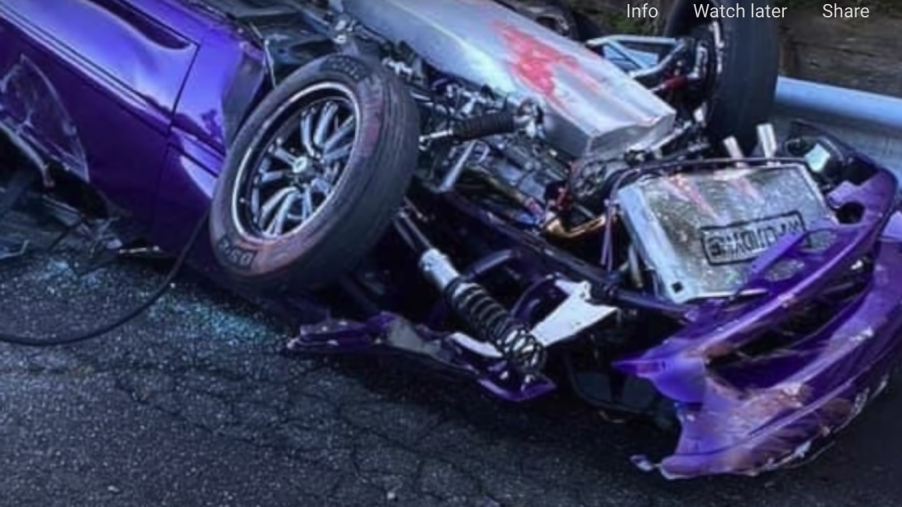
Watch: Mustang Gets Ripped In Half At No Prep Drag Race
What you’re looking at is the rear section of a Fox-body Mustang that got ripped in half. It happened at the 828 Cash Days No Prep drag racing event at Wilkesboro Dragway in North Carolina. As you can see there is plenty of roll cage and tubular reinforcement left. That’s what saved this lucky Mustang driver.
How can this Mustang not have become a wad of twisted metal?

For the most part drag racing is extremely safe. And there are violent crashes that are a testament to that. The reason is the tough NHRA safety regulations and rules for each class. Safety inspectors at every race make sure that vehicles participating in events like this are certified for certain attainable speeds. And finally, the safety crews are trained to deal with all aspects of a crash aftermath.
But the danger is always there. What you’ll see is @cornbread259 driving his purple Mustang making a clean launch from the starting line. Everything looks good until he’s just about to enter the top end when the car wiggles and then aims for the timing signs. Hitting the guardrail it then smacks in the supports for the sign which rips the car in half. Pieces of the car spray around the track in the aftermath.
The driver walked away from this crash

Incredibly, the driver walked away from this scene. He was uninjured-not a scratch. Others were not so lucky. A spectator was injured with a broken arm from flying debris. Obviously, no life-threatening injuries occurred. As they say, “It could have been a lot worse.”
This footage from TorqueTube shows two different views of the crash. Both are chilling. There is no other way to describe seeing a drag car head right for the guardrail at over 100 mph and then get ripped apart from elapsed time sign supports.
No-prep street cars are capable of traveling over 175 mph in the quarter-mile

A lot of these no-prep street cars are capable of traveling at over 175 mph in the quarter-mile. Some are going over 185 mph. You’ll note the license plates on this Mustang. These are still considered “street cars” though they’re capable of attaining these high speeds.
Wilkesboro should consider moving those supports farther away from the track. Maybe a large tubular support that can withstand cantilevering the sign toward the track. This way it keeps the support away from the track while placing the sign in a good place for spectators to view. At these speeds, those existing supports are like a butter knife in butter. They slice right through whatever hits them.



